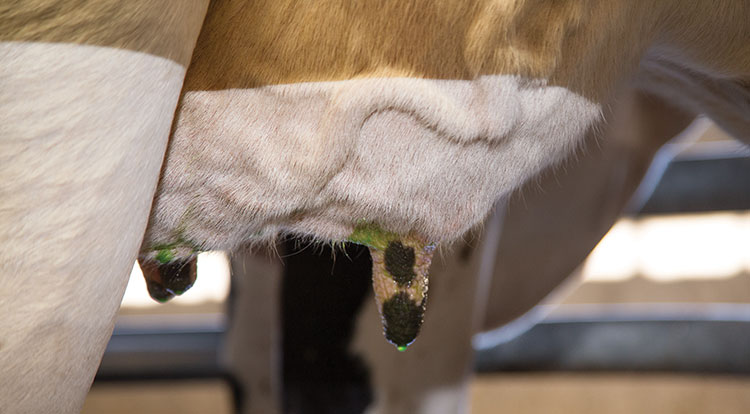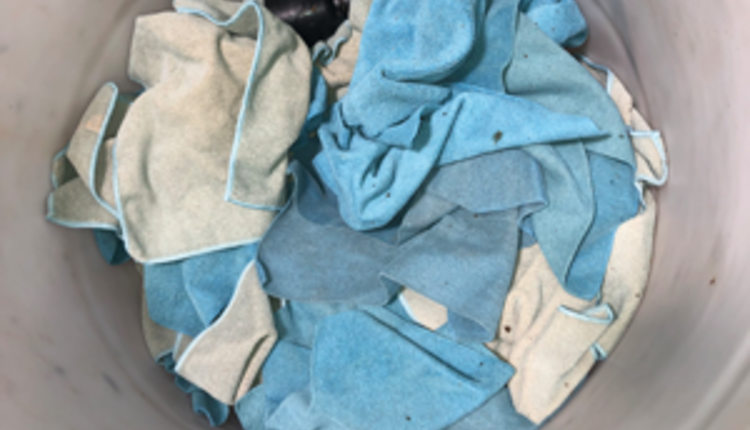
As anyone who is involved in dairy farming knows, mastitis can be a very frustrating disease. It sounds simple enough to keep mastitis-causing organisms away from the teat canal when it is open, but on an actual farm it can be tough to achieve. There are obvious risk factors that need to be controlled like attaching the unit to teats that are clean and dry and keeping the stall beds clean and dry. From our many farm visits, though, we see other hidden risk factors that may be contributing to mastitis on your dairy.
In previous articles, we have outlined the teat scoring method that we routinely employ on dairies, looking at the short-term changes of color and congestion at the teat end immediately after the unit comes off. We have also outlined the three most common milk flow parameters:
- How many pounds of milk are harvested in the first two minutes of milking (two-minute milk)
- Milking unit-on time
- How many seconds does the cow spend at a milk flow rate less than 2.2 pounds per minute (time in low flow).
In this article we will discuss how we use these tools together to identify mastitis risk factors and, most importantly, how you can use this thought process to reduce the hidden risk factors for mastitis on your dairy even if you do not have any flow information available.
Damages teats
In two recent studies we could show that both two-minute milk and time in low flow were associated with the short-term changes to teats (color and congestion). In other words, if the milking routine was not performed correctly and the cow did not let-down well, it negatively affected her teats by the time milking was complete.
We then further examined the individual flow rate segments in the first two minutes of unit-on time and showed that for every 2 pounds per minute increase in the 15 to 30 second flow rate, there was a 10 percent reduction in the risk of this cow exhibiting short-term changes. It needs to be emphasized that interpreting these incremental flow rates may differ significantly meter to meter but two-minute milk values should be comparable.
The take-home message from these two studies: Milking routine matters not only in terms of parlor efficiency but also in terms of how the teat is treated during milking. This matters for mastitis because these short-term changes can influence how quickly the teat canal closes after milking and also can lead to longer term changes such as hyperkeratosis or what is commonly called poor teat ends.
Why flow matters
So what is the big deal in terms of other mastitis risk factors if the teat (and therefore the cow) is not happy with the way it is being milked? A recent milking center evaluation helps to illustrate some of these hidden risk factors.
This was a herd that we had previously evaluated so we had a baseline data set that showed the average claw vacuum at peak flow and the pulsation parameters were within recommendations for the liners. We also knew that unit alignment was not a major issue on this dairy and that the automatic takeoffs were set to remove units at 2.9 pounds per minute. As we started scoring teats for the short-term changes and collecting our other data, it became very obvious that the cows were telling us they were not happy and that there was room for improvement in the milking center.
One of the first factors we identified is that cows were starting to step and kick at the units near the end of milking, which was leading to a jump in the number of liner slips in the last 30 seconds of milking.
Liner slips can lead to large irregular vacuum fluctuations, which are a risk factor for mastitis. The reason they are a risk is that they can lead to mastitis-causing organisms being propelled toward the teat end. The end of milking is a high-risk time for this to occur as any bacteria that enter the teat canal are less likely to be flushed out by milk.
A second factor that was occurring on this dairy was that cows were actually kicking the units off. This meant that the claw, shells, and liner mouthpieces were now contaminated with manure from the floor. The milkers then had to fully clean all the components of the unit. This situation added to their workload and disrupted the parlor flow.
If the units were not cleaned, which happened occasionally, the next cow that was milked had a liner attached with a manure-contaminated mouthpiece. Furthermore, the milker’s gloves were contaminated from handling the unit, which added to the number of mastitis-causing organisms that might get onto teats during forestripping or wiping.
A third factor that occurred when the cows kicked the units off was that manure from the inside of the back leg was rubbed off or splattered onto the side of the teat. Although it seems unlikely, anyone that has sampled cows or performed intramammary treatments knows that this can occur between the time that the teat is cleaned with an alcohol swab and the product is administered. This same event happens when cows are unhappy with the milking event and kick units off. It raises the risk for mastitis-causing organisms from the manure getting inside the open teat canal.
The fourth factor happening on this dairy was that the milking routine was constantly being disrupted to correct liner slips, clean units, or reattach units. This meant that the timing was not correct for the next set of cows, and so the cycle continued with unhappy cows with unhappy teats.
What we learned
In this farm example, the major issue that needed correction was that the milkers were not performing the right routine and needed to be retrained. After this issue was corrected, both the milk flow parameters and the short-term teat scores remedied themselves, reducing many of the above risk factors for mastitis. On other dairies, though, we have seen a very similar scenario when the vacuum, pulsation, unit alignment, or automatic take-off settings have been an issue.
We all can do better
Based on what we found in our research and farm visits, we think there are opportunity areas on many dairies to improve the milking event and reduce the risk factors for mastitis. We would strongly encourage you to spend time watching your cows being milked in order to decide if some of these hidden risk factors for mastitis may be occurring on your dairy.








